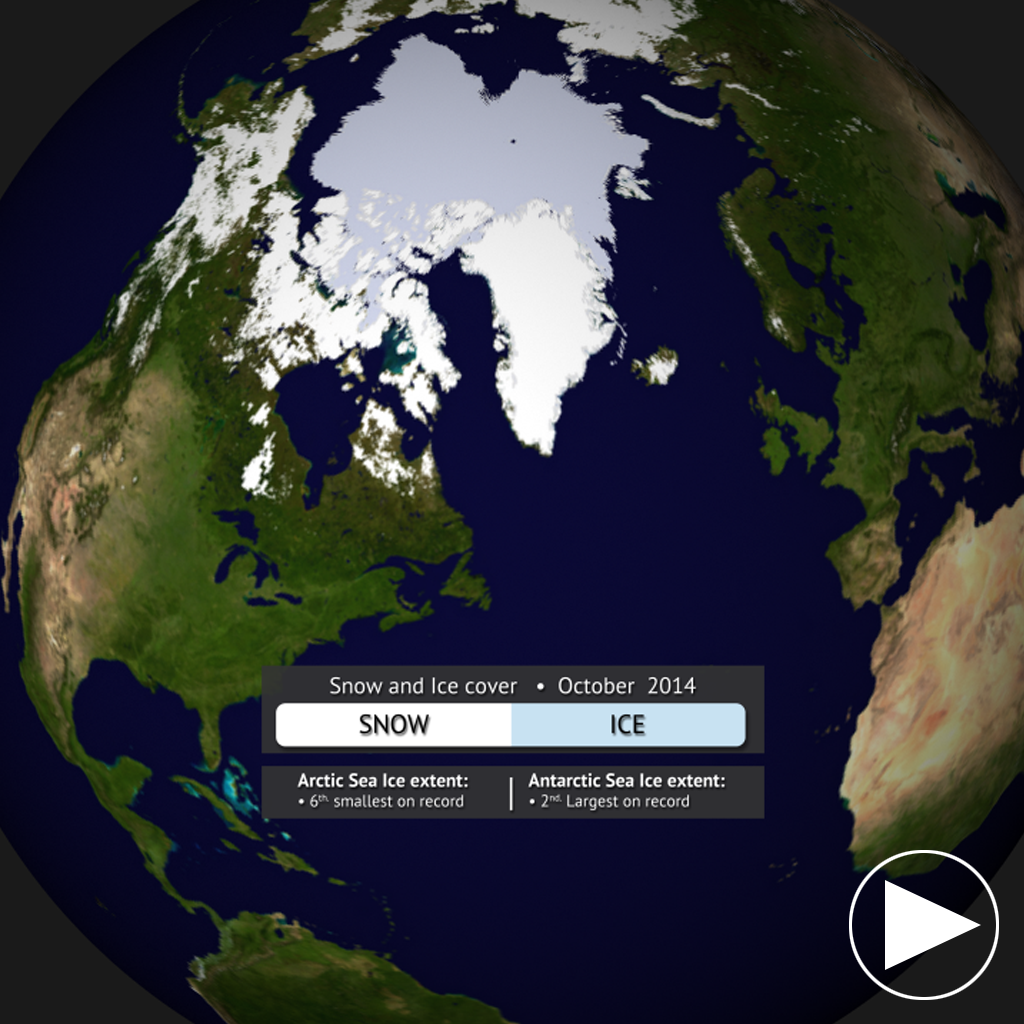Overview
Each month, we will provide information regarding the previous month’s climate. October 2014’s average global land and ocean temperature was the warmest October on record.
Highlights Dataset
Dataset: 20141121 EarthNow: October 2014 Highlights
Dataset: 20141121 EarthNow: AUDIO October 2014 Highlights
This dataset shows some of the major October weather and climate highlights from the National Climatic Data Center’s (NCDC) monthly global climate analysis, and serves as an overview of what can be discussed in the datasets that follow. Highlights are noted below.
- Australia: Australia experienced its second warmest mean temperature in October on record.
- Europe: Warmer than average temperatures.
- United States: Fourth warmest October on record.
- Japan: Above average rainfall.
- Cyclone Hudhud: Hudhud struck the southeastern coast of India bring heavy rainfall.
- Hurricane Gonzalo: First Category 4 hurricane to form in the Atlantic basin since Ophelia of 2011.
Sea Surface Temperature Anomalies Dataset
Dataset: 20141121 EarthNow: October 2014 SST Anomaly
Dataset: 20141121 EarthNow: AUDIO October SST Anomaly
- The real-time sea surface temperature anomaly dataset is a great way to visualize the El Niño – Southern Oscillation (ENSO) in the eastern Pacific Ocean.
- According to NOAA’s Climate Prediction Center, there is close to a 60% chance for a weak El Niño to develop during the Northern Hemisphere winter.
- The average October temperature for the global waters was a record high for the month, at 0.62°C (1.12°F) above the 20th century average, the highest on record for October.
- Remember blues indicate cooler than average temperatures and reds indicate warmer than average temperatures (white: average).
Snow and Ice Cover Dataset
Dataset: 20141121 EarthNow: October 2014 Snow and Ice Cover
Dataset: 20141121 EarthNow: AUDIO October 2014 Snow and Ice Cover
- Aside from helping to illustrate seasonal changes, the real-time Snow and Ice Cover dataset is a great way to convey sea ice change through time, including discussing how the current sea ice extent compares to other noteworthy years.
- The Arctic sea ice extent for October 2014 was 9.5% below the 1981-2010 average, making it the sixth smallest October sea ice extent since satellite records began in 1979.
- In Antarctica, the sea ice extent was the second largest on record for the month of October.
Seasonal Outlooks
Be sure to check out the 3-month seasonal outlooks for December – February.
- Global Temperature Outlook
- Global Precipitation Outlook
- U.S. Drought Outlook
Where do I find the datasets?
-
First, check your SOS system to make sure it’s not already in the EarthNow category.
-
If not, you can download the datasets and playlist files from this FTP Site.
-
Then download and use playlist files at the top of the page (or create your own) and make sure they are in /home/sos/sosrc or /home/sosdemo/sosrc.
-
More detailed information here
Helpful Resources for More Information
-
http://go.wisc.edu/3nd6pg National Climatic Data Center (NCDC)
-
http://go.wisc.edu/9y2618 About ENSO (El Niño/La Niña)
-
http://go.wisc.edu/1nx2n3 NCDC’s Global Climate Report
Credits:
EarthNow Team
NOAA
References:
NOAA National Climatic Data Center, State of the Climate: Global Analysis for August 2014, published online September 2014, retrieved on September 29, 2014 from http://www.ncdc.noaa.gov/sotc/global/.










